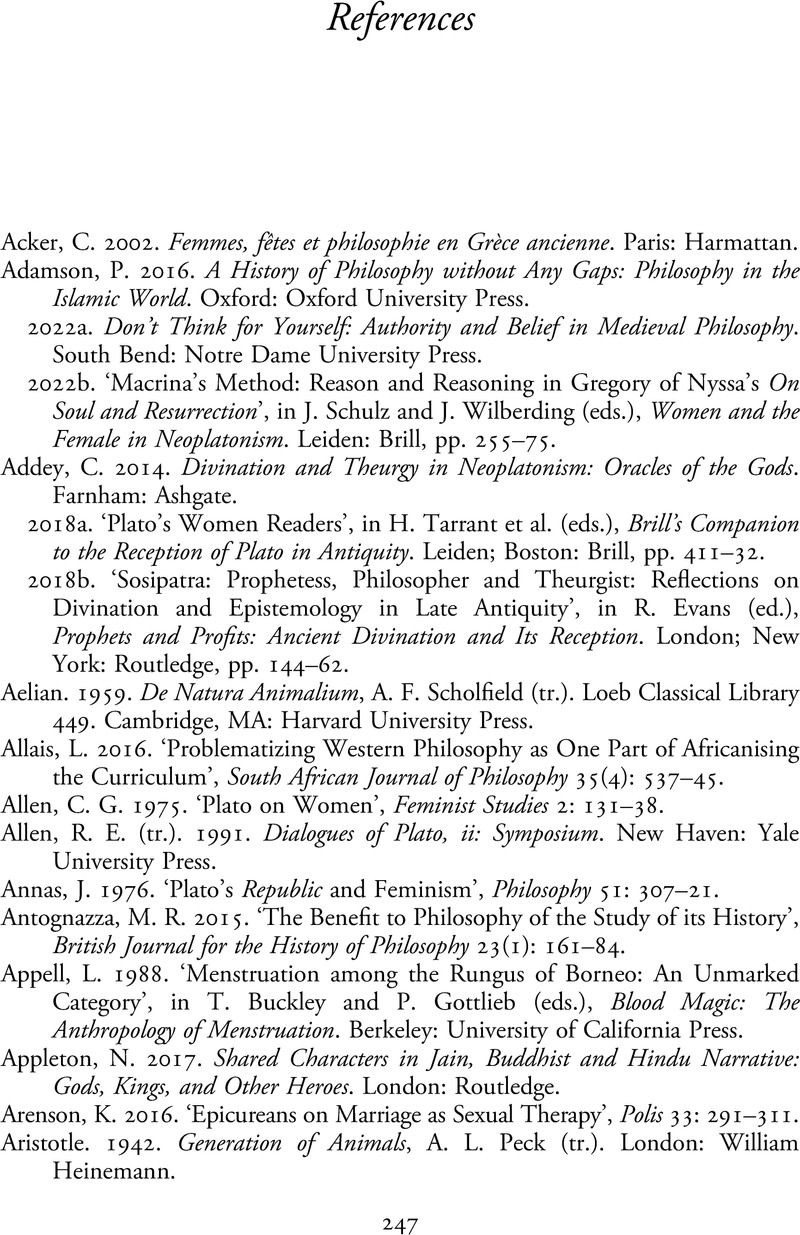Book contents
- Ancient Women Philosophers
- Ancient Women Philosophers
- Copyright page
- Dedication
- Contents
- Contributors
- Acknowledgements
- Abbreviations
- Introduction
- Chapter 1 Beyond Gender
- Chapter 2 Sulabhā and Indian Philosophy
- Chapter 3 Women’s Medical Knowledge in Antiquity
- Chapter 4 Ancient Women Epicureans and Their Anti-Hedonist Critics
- Chapter 5 Arete of Cyrene and the Role of Women in Philosophical Lineage
- Chapter 6 Women at the Crossroads
- Chapter 7 Pythagorean Women and the Domestic as a Philosophical Topic
- Chapter 8 Perictione, Mother of Metaphysics
- Chapter 9 Not Veiled in Silence
- Chapter 10 Women Philosophers and Ideals of Being a Woman in Neoplatonic Schools of Late Antiquity
- Chapter 11 Reappraising Ban Zhao
- Chapter 12 The Reception of Plato on Women
- References
- Index
- References
References
Published online by Cambridge University Press: 17 August 2023
- Ancient Women Philosophers
- Ancient Women Philosophers
- Copyright page
- Dedication
- Contents
- Contributors
- Acknowledgements
- Abbreviations
- Introduction
- Chapter 1 Beyond Gender
- Chapter 2 Sulabhā and Indian Philosophy
- Chapter 3 Women’s Medical Knowledge in Antiquity
- Chapter 4 Ancient Women Epicureans and Their Anti-Hedonist Critics
- Chapter 5 Arete of Cyrene and the Role of Women in Philosophical Lineage
- Chapter 6 Women at the Crossroads
- Chapter 7 Pythagorean Women and the Domestic as a Philosophical Topic
- Chapter 8 Perictione, Mother of Metaphysics
- Chapter 9 Not Veiled in Silence
- Chapter 10 Women Philosophers and Ideals of Being a Woman in Neoplatonic Schools of Late Antiquity
- Chapter 11 Reappraising Ban Zhao
- Chapter 12 The Reception of Plato on Women
- References
- Index
- References
Summary

- Type
- Chapter
- Information
- Ancient Women PhilosophersRecovered Ideas and New Perspectives, pp. 247 - 268Publisher: Cambridge University PressPrint publication year: 2023



